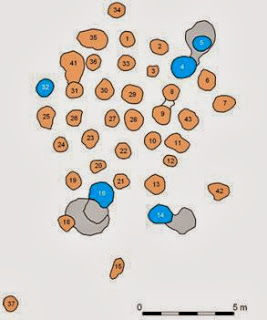I definitely do not agree with it. There is no evidence of a bank inside the ditch. If there was a bank, some pits would have been covered by it; the inside area would have been highly restreated and, most important, there would have been evidences of erosion inside the ditch from a bank built with the geological material. Instead, we have inside the ditch layers of structured depositions and occupation features.
But my point here is that the impact on public opinion
of words and pictures is not the same. I want to argue that drawing a scene is
more powerful than just describe it by words. Our society is, more than ever, dependent
on visual senses. It is easier to memorize an image than a written discourse.
That should give a higher sense of responsibility to
the visual reconstitutions of archaeological sites, and in this particular context,
of ditched enclosures. What might be presented as hypothesis in discourse seems
to be a certain fact when presented in a drawing or animation.
In time, written things became more valued than spoken
ones. Today images seem to have a lead. And where discourse might face a doubt,
image tends to receive uncritical adherence.
I don’t know if the readers of this blog agree with
this, but I think that we should have this in mind when we decide to use visual
representations of our ideas for these prehistoric sites (or any other sites).

















